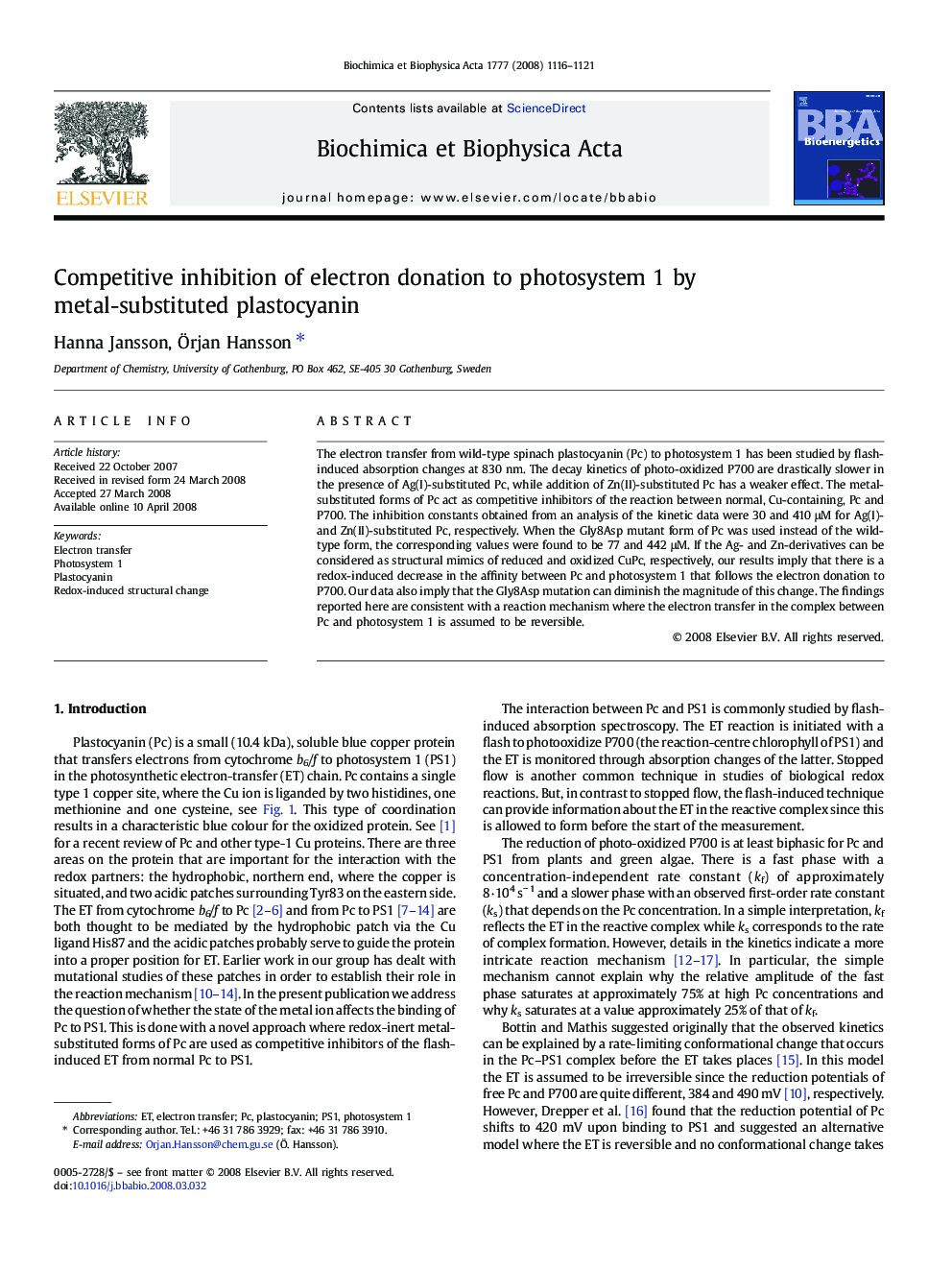| Article ID | Journal | Published Year | Pages | File Type |
|---|---|---|---|---|
| 1943229 | Biochimica et Biophysica Acta (BBA) - Bioenergetics | 2008 | 6 Pages |
The electron transfer from wild-type spinach plastocyanin (Pc) to photosystem 1 has been studied by flash-induced absorption changes at 830 nm. The decay kinetics of photo-oxidized P700 are drastically slower in the presence of Ag(I)-substituted Pc, while addition of Zn(II)-substituted Pc has a weaker effect. The metal-substituted forms of Pc act as competitive inhibitors of the reaction between normal, Cu-containing, Pc and P700. The inhibition constants obtained from an analysis of the kinetic data were 30 and 410 μM for Ag(I)- and Zn(II)-substituted Pc, respectively. When the Gly8Asp mutant form of Pc was used instead of the wild-type form, the corresponding values were found to be 77 and 442 μM. If the Ag- and Zn-derivatives can be considered as structural mimics of reduced and oxidized CuPc, respectively, our results imply that there is a redox-induced decrease in the affinity between Pc and photosystem 1 that follows the electron donation to P700. Our data also imply that the Gly8Asp mutation can diminish the magnitude of this change. The findings reported here are consistent with a reaction mechanism where the electron transfer in the complex between Pc and photosystem 1 is assumed to be reversible.
